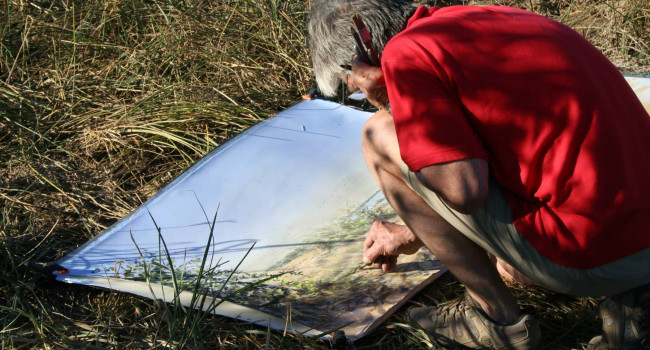
BirdTrack migration blog (9th-15th September)
Whinchat, Wryneck, and Spotted Flycatcher were all well reported; it looks like Spotted Flycatcher are a few days later in leaving than usual, perhaps as a result of the drier summer?
After a quiet start to autumn passage, there was a glut of Curlew Sandpiper reports with over 50 noted at RSPB Frampton Marsh and other small flocks seen at a number of sites all across Britain and Ireland. Could the good numbers reported be an indication of a successful breeding season? Let us hope so. Another wader that saw a spike in sightings was Spotted Redshank - birds at this time of year are mostly juveniles undertaking their very first migration.
The first Yellow-browed Warblers of the year have been seen in the last couple of days. This is for many the quintessential species of the autumn, and many a birdwatcher will be looking forward to hearing that distinctive “tchu-wee” call in the next few weeks.
Listen to the Yellow-browed Warbler call
Seabird passage remained steady but the main focus was eastern coasts rather than the usual southwest headlands, with Cory’s and Great Shearwaters seen from a number of sites.
Listen to the 'tip-tip' call of the Grey Wagtail
Species Focus - Grey wagtail
Many of us will associate Grey Wagtail with their fast-flowing river breeding habitat, but it is also a partial and passage migrant in the UK. Autumn migration peaks during the second half of September and is often most obvious on our southern coast.
There are very few records of birds ringed in the UK being found on the continent, but there is evidence that suggests at least some of our birds spend the winter months in France and the Iberian Peninsula. It is known that some continental birds winter as far south as North Africa - it may be that some of our breeding birds make it that far south too.
For most of the year, Grey Wagtails are fairly solitary birds. During migration, though, they are known to move in loose flocks; it is not unusual to see small numbers on the move together, given away by their repeated ‘tip-tip’ calls. Grey Wagtail migration is largely diurnal.
It is estimated that around 37, 000 pairs breed in the UK. The species is Amber-listed as a bird of conservation concern.

Looking ahead
As we near mid-September, migration will ramp up considerably. In the UK autumn migration peaks from mid-September to mid-October, and most of our summer visitors will be on the move - but the prevailing weather conditions will have an influence on when and in what numbers. During the coming weekend, most of the eastern side of the UK will experience easterly airflow which should not only result in a movement of common migrants but some scarce drift migrants from the continent, too.
Whinchats, Yellow Wagtails, Wheatears and Meadow Pipits should be well represented in any movement this weekend, and we could see the first large finch movement too - at this stage, this will be mostly Linnets and Goldfinches. On the scarce migrant front, Wryneck and Barred Warbler are favourites, but we could also see a few Red-backed Shrikes and maybe something a little rarer; might there be more Paddyfield Warblers to be found, or a few Red-footed Falcons which get pushed further west?
As we move into next week the winds are forecast to turn southerly, coming all the way from the Mediterranean. They could well bring a few Hoopoes and the odd Red-rumped Swallow and Woodchat Shrike. These winds might also stall migration a little, making the south coast a good place to be early next week for grounded migrants.
Launching the new BirdTrack App
A fresh look and new features - the new app is the perfect companion when out birdwatching and enables you to easily keep track of the birds you see.
Find out more







Share this page